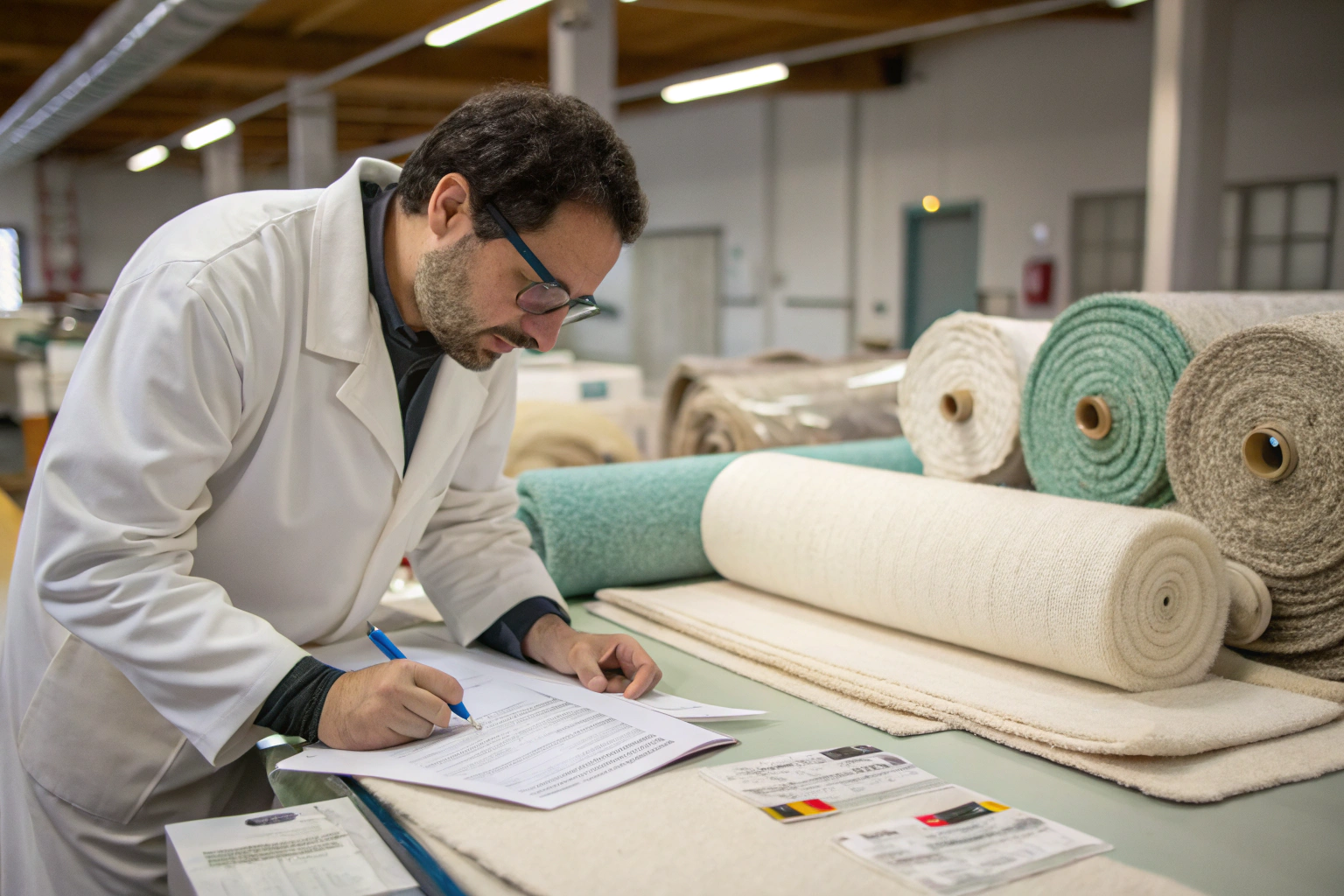When it comes to sourcing chenille for home décor—whether it’s for sofas, cushions, throws, or curtains—quality and safety certifications matter more than ever. In the post-pandemic landscape, both retailers and end consumers are more cautious about the health and sustainability of what enters their homes. If you’re looking for chenille that meets strict European safety standards like Oeko-Tex, the sourcing process can seem daunting, especially when importing from overseas.
To successfully source Oeko-Tex certified chenille for home décor, buyers need to focus on three core areas: supplier certification transparency, testing protocols, and logistics reliability. This ensures you’re not only getting soft, luxurious fabric but also one that is safe for sensitive skin and meets global compliance benchmarks.
In this guide, I’ll walk you through how we help clients worldwide—from boutique brands in the U.S. to large wholesalers in Russia—source compliant chenille that’s both market-ready and cost-effective. As a fabric manufacturer based in Keqiao, China, with our own testing lab and certification verification process, we understand what Ron (our American target buyer persona) is really looking for: efficiency, integrity, and low-risk sourcing.
What Is Oeko-Tex Certification and Why Does It Matter?
Oeko-Tex is not just another label—it’s the gold standard when it comes to textile safety. Buyers in Europe and the U.S. increasingly demand fabrics that are free from harmful chemicals, heavy metals, and allergenic dyes. For home décor textiles like chenille, which touch the skin and influence indoor air quality, Oeko-Tex is more than desirable—it’s essential.
Oeko-Tex Standard 100 certifies that the fabric has been tested against over 100 toxic substances and is safe for direct contact with skin, especially for sensitive groups like children and pets. This makes it a key factor for any fabric used in residential furnishings.
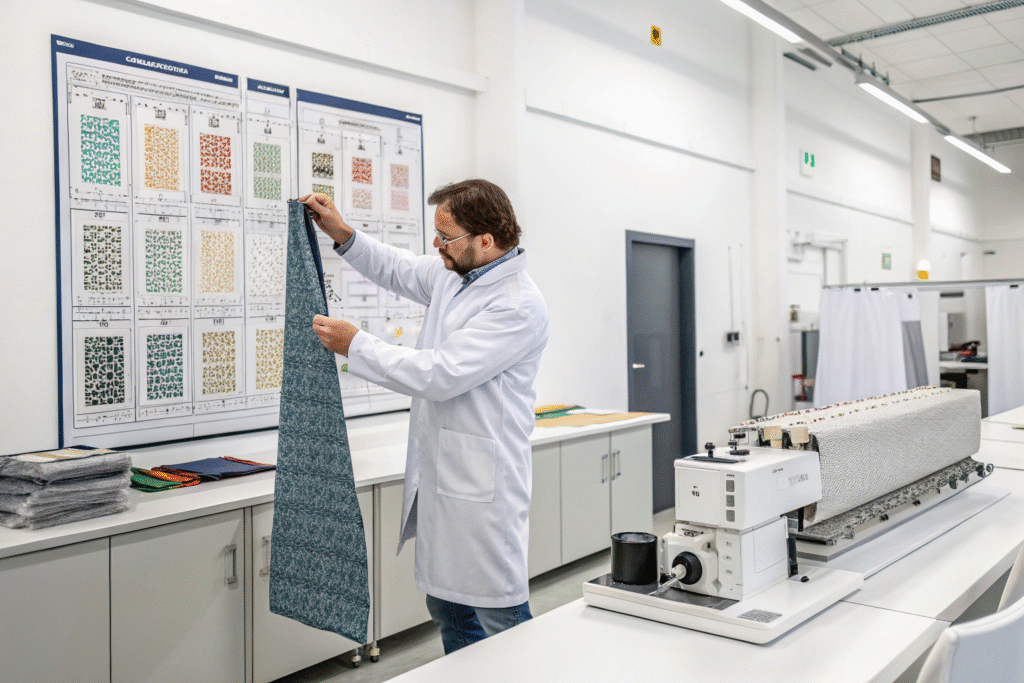
What Tests Are Included in Oeko-Tex Certification?
Oeko-Tex Standard 100 includes comprehensive tests covering:
| Test Category | Description |
|---|---|
| Heavy Metals | Lead, mercury, cadmium testing |
| Formaldehyde | Must meet very low release thresholds |
| AZO Dyes | Carcinogenic dye group bans |
| pH and Color Fastness | To ensure fabric doesn’t irritate the skin |
This standard is globally recognized, and it aligns with REACH regulations in the EU and California Prop 65 laws in the U.S., enhancing your product’s global acceptance.
Who Issues the Oeko-Tex Certificates?
Not all certificates are created equal. The authorized testing bodies behind Oeko-Tex—such as Hohenstein Institute or OEKO-TEX Association—conduct lab-level analysis, often requiring renewal annually. A valid certificate should clearly list the product scope, certificate number, and issuing institute. When sourcing chenille, always request these documents before placing bulk orders.
How to Identify Genuine Oeko-Tex Certified Chenille?
When you search for chenille on B2B platforms like Alibaba or attend textile fairs, you’ll find hundreds of suppliers claiming Oeko-Tex compliance. But how many are actually certified?
To verify authenticity, buyers should request the Oeko-Tex certificate and cross-check it on the official Oeko-Tex validation portal. Avoid working with suppliers who refuse or delay in providing documentation.
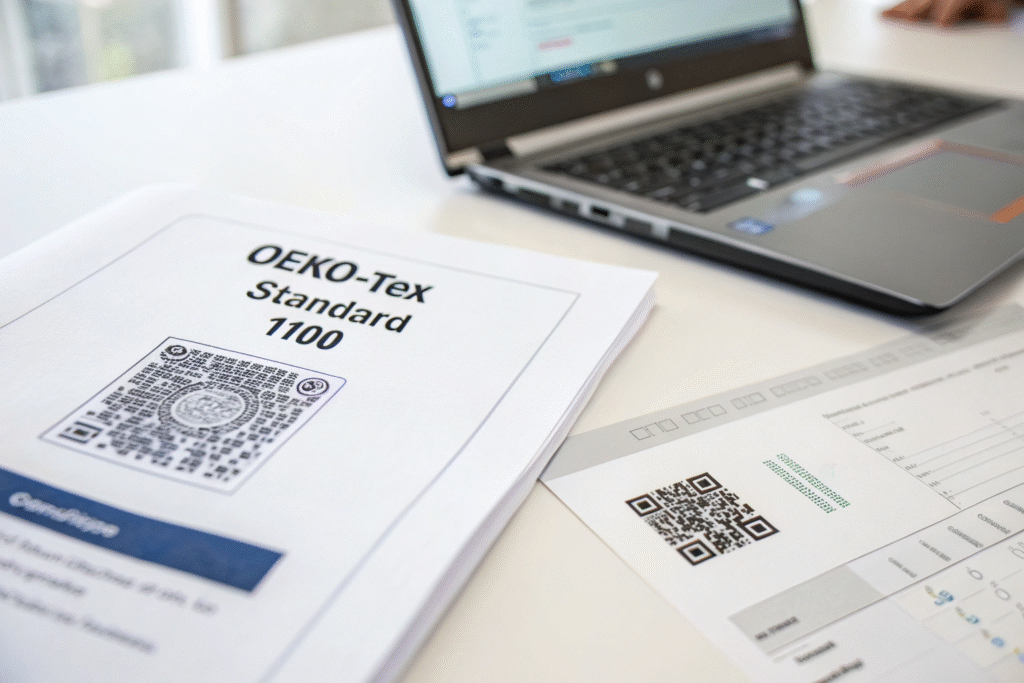
What Are Red Flags of Fake Certifications?
- Certificates that are not in the supplier’s name
- Documents without traceable certificate numbers
- Missing issue and expiry dates
- Certificates without product descriptions matching your inquiry
Real chenille certification should specifically include woven pile fabrics under its scope, not just general cotton or polyester entries.
Can You Trust Third-Party Trading Companies?
Sometimes yes, but caution is advised. Many Chinese trading companies buy fabrics in bulk and label them as Oeko-Tex without verifying batch-level compliance. Always insist on traceability from the yarn source to finishing. Platforms like Sedex can also help screen suppliers’ ethical sourcing behavior and traceability records.
What Are the Best Applications for Certified Chenille?
Chenille’s unique softness and visual depth make it one of the top choices in premium home décor textiles. But certified chenille adds another layer—safety.
Certified chenille is ideal for children’s rooms, luxury hotel interiors, and senior-friendly furniture due to its non-toxic, low-irritation profile. The Oeko-Tex badge gives retailers an extra selling point in high-end segments.
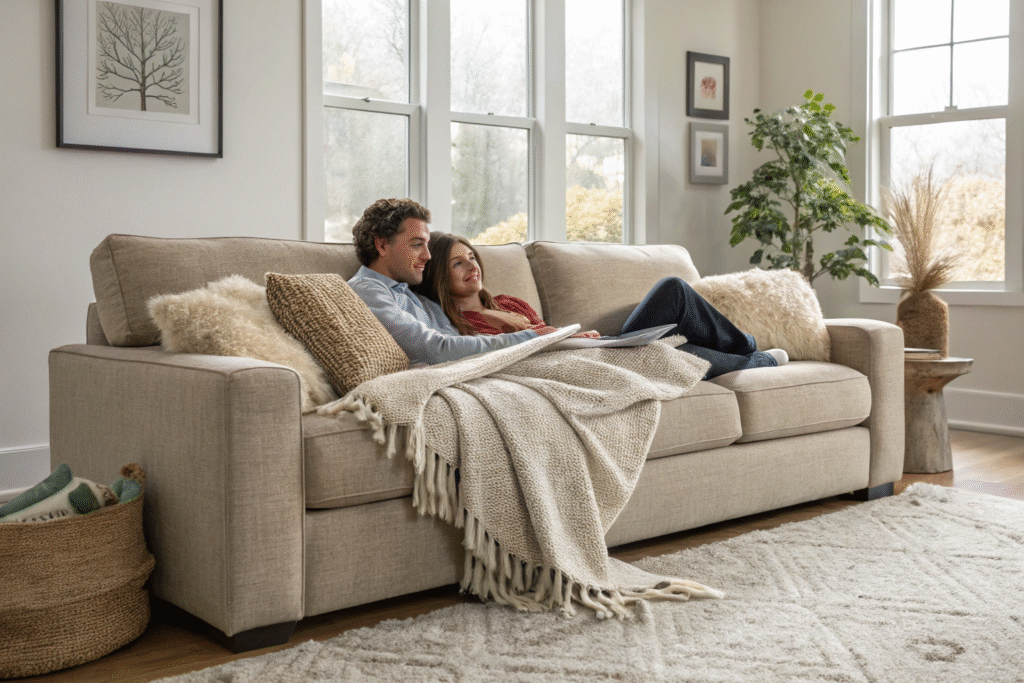
Where Is Oeko-Tex Chenille Most Commonly Used?
| Product Use | Value Proposition |
|---|---|
| Upholstery | Safe for long-term skin contact and lounging |
| Throws & Blankets | Hypoallergenic and suitable for sensitive skin |
| Drapery & Curtains | Emission-safe, improves indoor air quality |
| Pet Bedding | Safer material for allergy-prone animals |
In our Keqiao-based factory, we regularly produce chenille in custom GSM ranges (e.g., 280-380gsm) for these markets. Buyers often specify blends such as polyester-rayon or polyester-cotton depending on end-use comfort and drape.
How Do U.S. and EU Buyers Customize Their Orders?
Ron, like many U.S. buyers, prefers ordering by collection themes—e.g., “Desert Neutrals,” “Minimalist Japandi,” or “Playful Kids’ Room.” We offer batch dyeing and digital mockups to visualize how chenille would look in the final product setting. Tools like Pantone Color Finder help align palettes precisely.
How Can You Source Oeko-Tex Chenille Efficiently from China?
Now that you know what certified chenille looks like and where to use it, let’s talk about how to get it into your hands safely and efficiently.
Efficient sourcing starts with choosing a vertically integrated manufacturer who owns or manages all key processes—from yarn selection to lab tests and shipping. This ensures faster lead times, better quality control, and fewer third-party risks.
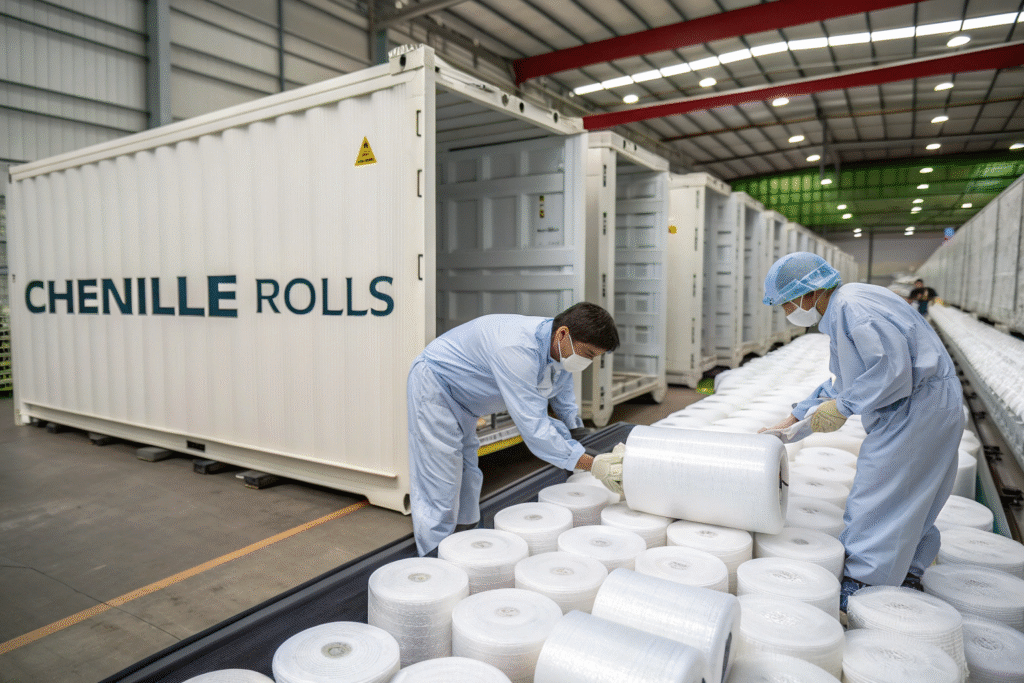
What Is the Typical Lead Time for Chenille Production?
In our operations at Fumao Fabric, we offer:
- Sample delivery within 48 hours
- Bulk production: 12-18 days
- Oeko-Tex certificate presentation: within 1 day upon request
These timelines beat the industry average, thanks to our integration with dyeing, finishing, and packing facilities in the Keqiao region. We also partner with freight forwarders offering DDP shipping to minimize customs-related delays for U.S. clients.
How Can You Reduce Import Tariff Impact?
One of Ron’s pain points is navigating U.S. tariffs. We help mitigate this by offering:
- HTS code pre-classification
- Blended material options that may qualify for lower duties
- Multi-port shipping options (e.g., West Coast vs. East Coast depending on rates)
Working with our CNAS-accredited lab also helps clients pass inspection checkpoints quickly and avoid unnecessary customs holds.
Conclusion
Sourcing Oeko-Tex certified chenille for home décor doesn’t need to be complicated. With the right manufacturing partner, you can streamline everything—from documentation and compliance to production and logistics. By choosing a supplier like us who offers transparent certification, flexible MOQs, and vertically integrated processes, you gain a serious edge in both quality and efficiency.
If you're ready to elevate your home décor line with safe, luxurious chenille that meets global certification standards, let’s work together. Contact our Business Director Elaine at elaine@fumaoclothing.com to explore how Shanghai Fumao can support your next project with high-performance fabrics and worry-free logistics.

